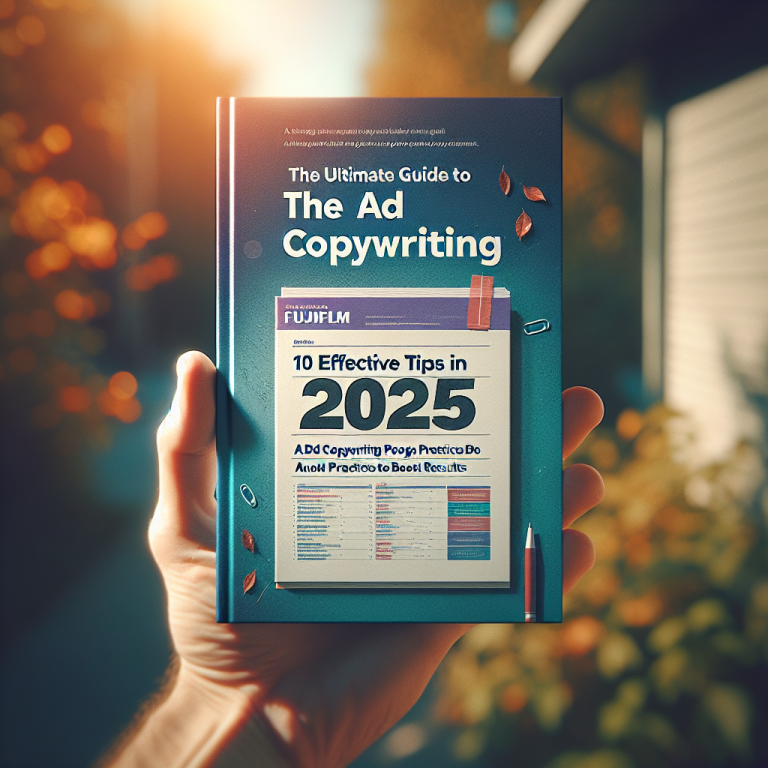The Ultimate Guide to Psychology of Copywriting Strategies for 2025
1. Understanding Consumer Behavior in 2025
1.1 How Digital Natives Influence Copywriting
The rapid evolution of digital natives in 2025 significantly impacts the psychology of copywriting. Today, younger audiences are more tech-savvy and skeptical of overt advertising. To connect effectively, copywriters need to tap into the values and behaviors of this demographic, emphasizing authenticity and social proof. A key strategy is leveraging user-generated content and real testimonials that resonate with their desire for transparency.
Research shows that digital natives prefer personalized experiences, making it essential to craft messages that speak directly to individual needs. Use data-driven insights to tailor your copy, ensuring it aligns with their online personas. For example, incorporating interactive elements and conversational language can increase engagement and trust.
1.2 Emotional Triggers in 2025’s Consumer Decisions
Understanding the emotional triggers that drive consumer decisions remains central to the psychology of copywriting. In 2025, consumers are driven by desires for security, belonging, and purpose. Effective copy appeals to these emotions by telling compelling stories and highlighting shared values. For instance, brands that demonstrate social responsibility tend to evoke stronger emotional responses, fostering loyalty.
Utilizing psychological principles like reciprocity and curiosity can further enhance your copy. Offering valuable insights or free resources can trigger a sense of obligation or interest, nudging prospects toward conversion. Remember, emotional resonance today is more critical than ever in competitive markets.
1.3 The Role of Cognitive Biases in Shaping Content
Cognitive biases such as social proof, scarcity, and anchoring greatly influence consumer behavior in 2025. Recognizing these biases allows copywriters to craft messages that align with natural human tendencies. For example, emphasizing limited-time offers leverages scarcity bias to motivate rapid decisions.
Applying these principles ethically is vital; manipulation can backfire and damage brand reputation. Instead, use biases to highlight genuine benefits and build trust. Data indicates that content utilizing cognitive biases increases engagement rates by up to 40%.
2. The Neuromarketing Principles Shaping Copywriting
2.1 Brain-Based Triggers That Influence Purchase Decisions
Neuromarketing uncovers how the brain responds to various stimuli, informing effective copywriting strategies. In 2025, understanding triggers such as dopamine release from anticipation or reward activates consumersâ decision-making processes. Copy that evokes curiosity or promises quick wins taps into these neural responses.
For example, teaser headlines that promise surprising benefits or highlight social proof can stimulate dopamine, making prospects more receptive. Incorporating sensory language also enhances mental engagement, leading to stronger emotional connections.
2.2 Visual and Language Synergy in Neuromarketing
The combination of visuals and language in copywriting maximizes impact by appealing to the brainâs multi-sensory processing. In 2025, brands prioritize immersive storytelling with rich visuals and compelling copy that complement each other. This synergy increases retention and persuasion.
Practical tip: Use high-quality images with descriptive alt text like “” to enhance message clarity and reinforce emotional cues. Visuals should evoke the desired mood aligning with your brand voice.
2.3 Ethical Considerations in Neuromarketing
While neuromarketing offers powerful tools, ethical use is paramount. Respect consumer autonomy and avoid manipulation that can erode trust. In 2025, transparent practices and education about how psychological principles influence decision-making are expected to be industry standards.
Developing ethically grounded copy enhances brand reputation and long-term customer relationships. Data from recent studies suggests consumers are increasingly aware of subconscious influences and prefer brands that demonstrate integrity.
Frequently Asked Questions about the Psychology of Copywriting
Q1: What is the psychology of copywriting?
The psychology of copywriting involves understanding how human minds process information, emotions, and decision-making to craft compelling marketing messages. By applying psychological principles, copywriters can influence consumer behavior more effectively.
Q2: How can I use cognitive biases in my copywriting?
Leverage biases such as social proof, scarcity, and anchoring to make your messages more persuasive. For example, showcasing reviews (social proof) or limited-time offers (scarcity) can motivate quicker responses.
Q3: Why is neuromarketing important for 2025 copywriting?
Neuromarketing provides insights into how the brain reacts to different stimuli, helping you craft content that resonates on a subconscious level. This approach increases engagement, conversions, and customer loyalty.
Q4: How does understanding consumer behavior influence copywriting?
It allows you to tailor messages that align with consumers’ motivations, fears, and desires. In 2025, adapting your copy based on behavioral insights ensures relevance and effectiveness.
Conclusion
Mastering the psychology of copywriting is crucial for success in 2025. By understanding consumer behavior, leveraging neuromarketing principles, and ethically applying psychological strategies, your copy will resonate more deeply and drive meaningful action. Stay attuned to evolving trends and keep refining your approach to stay ahead in the competitive landscape. Remember, the most persuasive copy is rooted in psychological insights that reflect genuine understanding of your audienceâs minds and hearts.








